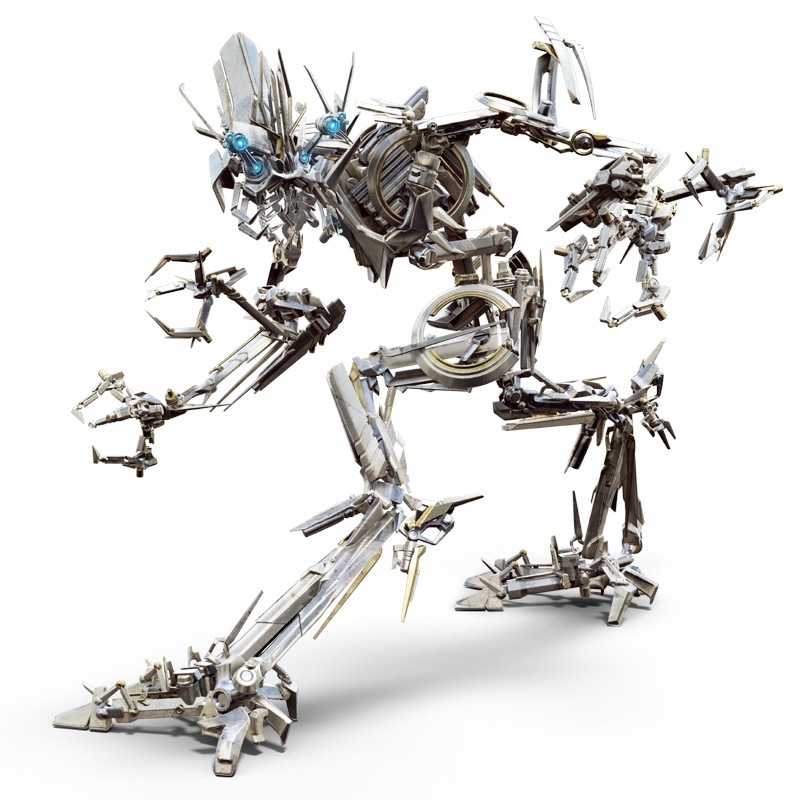Number 24
JAMES MOODY
Moody's Mood (Instrumental Version and Vocal Version)
Moody's Mood 1949
https://www.youtube.com/watch?v=u0KN4_99qEM
Moody's Mood for Love with Dizzy Gillespie
https://www.youtube.com/watch?v=F_c-HtjENkU
James Moody featuring Eddie Jefferson - Moody's Mood For Love
https://www.youtube.com/watch?v=x_vZ8EXaxgg
Moody had an unexpected hit with "Moody's Mood for Love," a 1952 song written by Eddie Jefferson which used as its melody an improvised solo that Moody had played on a 1949 recording of "I'm in the Mood for Love". Moody adopted the song as his own, recording it with Jefferson on his 1956 album Moody's Mood for Love and performing the song regularly in concert, often singing the vocals himself.

Number 23
Don Pullen Ode to Life
Ode to Life
https://www.youtube.com/watch?v=IAZTYW9Z7cc
Ode to Life is an album by American jazz pianist Don Pullen and the African-Brazilian Connection recorded in 1993 for the Blue Note label.

Number 22
JOHN COLTRANE Blue Train
Blue Train
https://www.youtube.com/watch?v=S1GrP6thz-k
Blue Train is the second studio album by John Coltrane, released in 1958 on Blue Note Records, catalogue BLP 1577. Recorded at the Van Gelder Studio in Hackensack, New Jersey, it is Coltrane's second solo album, the only one he recorded for Blue Note as a leader, and the only one he conceived personally for the label. It has been certified a gold record by the RIAA.
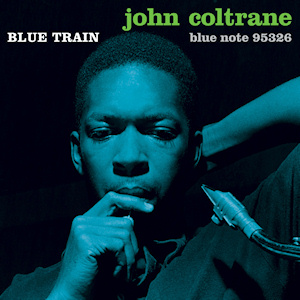
Number 21
Wayne Shorter SPEAK NO EVIL
Speak No Evil
https://www.youtube.com/watch?v=fvRkGglLe-U
Wayne Shorter (born August 25, 1933) is an American jazz saxophonist and composer. Many of Shorter's compositions have become jazz standards, and his output has earned worldwide recognition, critical praise and various commendations, including 10 Grammy Awards.He has also received acclaim for his mastery of the soprano saxophone (after switching his focus from the tenor in the late 1960s), beginning an extended reign in 1970 as Down Beat's annual poll-winner on that instrument, winning the critics' poll for 10 consecutive years and the readers' for 18. The New York Times has described Shorter as "probably jazz's greatest living small-group composer and a contender for greatest living improviser.

Number 20
Oliver Nelson STOLEN MOMENTS
Stolen Moments
https://www.youtube.com/watch…
Oliver Edward Nelson (June 4, 1932 – October 28, 1975) was an American jazz saxophonist, clarinetist, arranger, composer, and bandleader.
He is perhaps best remembered for his groundbreaking 1961 Impulse! album The Blues and the Abstract Truth, widely regarded as one of the most significant American jazz recordings of the modern jazz era. The album features the definitive version of the jazz standard "Stolen Moments". Other important recordings from the early 1960s are More Blues and the Abstract Truth and Sound Pieces, both also on Impulse!.
Number 19
HORACE SILVER Song for My Father
Horace Silver 5tet - Song For My Father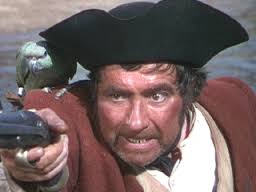
https://www.youtube.com/watch?v=S1CilMzT55M
Horace Silver (born Horace Ward Martin Tavares Silva, September 2, 1928 – June 18, 2014) was an American jazz pianist and composer.[1]
Silver is known for his distinctive playing style and pioneering compositional contributions to hard bop. He was influenced by a wide range of musical styles, notably gospel music, African music, and Latin American music, and sometimes ventured into the soul jazz genre.
Number 18
HANK MOBELY Soul Station
Soul Station
https://www.youtube.com/watch?v=YmtHdBPzi_w
Henry "Hank" Mobley (July 7, 1930 – May 30, 1986) was an American hard bop and soul jazz tenor saxophonist and composer. Mobley was described by Leonard Feather as the "middleweight champion of the tenor saxophone", a metaphor used to describe his tone, that was neither as aggressive as John Coltrane nor as mellow as Stan Getz, and his style that was laid-back, subtle and melodic, especially in contrast with players like Sonny Rollins and Coltrane. The critic Stacia Proefrock claimed he is "one of the most underrated musicians of the bop era.

Number 17
Clifford Brown & Max Roach Quintet - Sandu
Sandu
https://www.youtube.com/watch?v=Pu-0vBaZmc0
Clifford Brown & Max Roach is a 1955 album by influential jazz musicians Clifford Brown and Max Roach as part of the Clifford Brown and Max Roach Quintet, described by The New York Times as "perhaps the definitive bop group until Mr. Brown's fatal automobile accident in 1956". The album was critically well received and includes several notable tracks, including two that have since become jazz standards. The album was inducted into the Grammy Hall of Fame in 1999. It is included in Jazz: A Critic's Guide to the 100 Most Important Recordings at #34, where it is described by New York Times jazz critic Ben Ratliff as "one of the strongest studio albums up to that time".
Originally released on the EmArcy label, it has been multiply re-issued, including in a 2000 edition by Verve Records that contains additional tracks.
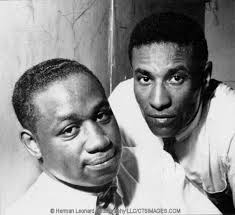
Number 16
Modern Jazz Quartet DJANGO
https://www.youtube.com/watch?v=1z88Vc1oyvU
The Modern Jazz Quartet was a jazz combo established in 1952 that played a style of jazz influenced by classical music, cool jazz, blues and bebop. The band performed over a forty-year span with only one personnel change.Under John Lewis's leadership they carved their own niche by specializing in elegant, restrained music that used sophisticated counterpoint yet nonetheless retained a strong blues feel. John Lewis firmly believed that J.S. Bach and the blues were compatible, combining classical form with jazz improvisation and polyphony. The band was also noted for its ability to play alongside a variety of other groups. For the majority of their career the group comprised John Lewis (piano and musical director), Milt Jackson (vibraphone), Percy Heath (double bass) and Connie Kay (drums).Initially active into the 1970s, until Jackson quit due to creative disagreement and frustration with their busy touring schedule, the MJQ reformed intermittently into the 1990s.
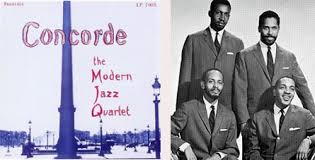
Number 15
Modern Jazz Quartet SOFTLY AS IN A MORNING SUNRISE
Softly as in a Morning Sunrise
https://www.youtube.com/watch?v=crCxefHCLJA
"Softly, as in a Morning Sunrise" is a song with music by Sigmund Romberg and Oscar Hammerstein II from the 1928 operetta The New Moon. One of the best-known numbers from the show, it is a song of bitterness and yearning for a lost love, sung in the show by Philippe (tenor), the best friend of the hero, Robert Mission (baritone).
The original song was composed as a tango, and features a dance as accompaniment to the choral reprise, but many versions of the song have changed the tempo completely (there have been many jazz renditions). What some may consider the most ludicrous version is the one featured in the 1940 film version of the operetta, in which it is actually sung as a cheerful ditty by Nelson Eddy while he shines his shoes, despite the melancholy nature of the song's lyric.
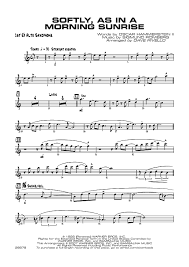
Number 14
Lambert, Hendricks, & Ross 1959 Cloudburst
Cloudburst
https://www.youtube.com/watch?v=LDbAsndZGW0&list=RDLDbAsndZGW0
The group formed in 1957 and recorded their first album Sing a Song of Basie for ABC-Paramount Records. The album featured versions of Count Basie standards and was successful enough that the Count Basie Orchestra collaborated with them on Sing Along With Basie (1959). Sing a Song of Basie was awarded a Grammy Hall of Fame Award in 1998.
Beginning in 1959, the trio recorded three LPs with Columbia Records. They recorded a version of Ross' 1952 song "Twisted", featuring her lyrics set to a Wardell Gray melody. Their High Flying won a Grammy Award for Best Performance by a Vocal Group in 1962. Lambert, Hendricks & Ross were voted Best Vocal Group in the Down Beat Readers Poll from 1959 to 1963.
Annie Ross left the group in 1962, replaced by vocalist Yolande Bavan.

Number 13
Art Tatum's Tea for Two (1933)
Tea for Two
https://www.youtube.com/watch?v=KxadblDT6zI
Arthur "Art" Tatum, Jr. (/ˈteɪtəm/, October 13, 1909 – November 5, 1956) was an American jazz pianist.
Tatum is widely acknowledged as one of the greatest jazz pianists of all time, and was a major influence on later generations of jazz pianists. He was hailed for the technical proficiency of his performances, which set a new standard for jazz piano virtuosity. Critic Scott Yanow wrote, "Tatum's quick reflexes and boundless imagination kept his improvisations filled with fresh (and sometimes futuristic) ideas that put him way ahead of his contemporaries."
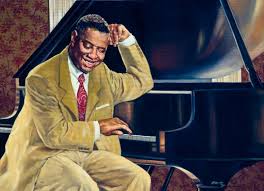
Number 12
Stéphane Grappelli -- Time After Time
Time After Time
https://www.youtube.com/watch?v=lDU3-43DGzk
...Grégor's band reunited as jazz ensemble under the leadership of pianist Alain Romans and saxophonist Ekyan. While playing with this band, Grappelli met Gypsy jazz guitarist Django Reinhardt in 1931. He was looking for a violinist interested in jazz, and invited Grappelli to play with him at his caravan. Though the two played for hours that afternoon, their commitments to their respective bands prevented them from pursuing a career together.
Three years later, in 1934, the two encountered each other at Claridge's in London, England, and they began their musical partnership. Pierre Nourry, the secretary of the Hot Club de France invited Reinhardt and Grappelli to form the Quintette du Hot Club de France, with Joseph Reinhardt and Roger Chaput joining on guitar, and Louis Vola on bass.
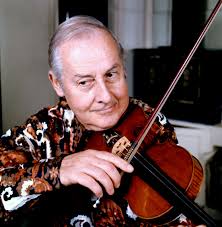
Number 11
ELLA MAE MORSE ~ MILKMAN KEEP THOSE BOTTLES QUIET ~ 1943
Milkman Keep Those Bottles Quiet
https://www.youtube.com/watch?v=8A4W_iO2pB0&list=PLrEgOs4cMOfjwG4ENNW78NgAf0M52SqXs&index=8
In 1943, Morse began to record solo. She reached #1 in the R&B chart with "Shoo-Shoo Baby"[4] in December for two weeks. In the same year she performed "Cow Cow Boogie" in the film Reveille with Beverly and starred in Universal's South of Dixie and The Ghost Catchers with Olsen and Johnson and How Do You Dooo? with radio's Mad Russian, Bert Gordon. She sang in a wide variety of styles, and she had hits on both the U.S. pop and rhythm and blues charts. However, she never received the popularity of a major star because her versatility prevented her from being placed into any one category of music.
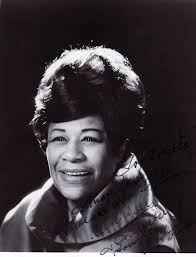
Number 10
Kenny Drew UNDERCURRENT
Undercurrent
https://www.youtube.com/watch?v=9LdQEIblFyY
Drew's first recording, in 1950, was with Howard McGhee, and over the next two years he worked in bands led by Buddy DeFranco, Coleman Hawkins, Lester Young, and Charlie Parker, among others.[1] After a brief period with his own trio in California, Drew returned to New York, playing with Dinah Washington, Johnny Griffin, Buddy Rich, and several others over the following few years. He led many recording sessions throughout the '50s, and in 1957 appeared on John Coltrane's album Blue Train.

Number 9
Billy Eckstine 2ND BALCONY JUMP
2nd Balcony Jump
https://www.youtube.com/watch?v=2n5RFfDXJlM&list=PLIzQd_Wf46Y2PcsMCtvJ4ob9UYsAMuWRc&index=37
In 1944, Eckstine formed his own big band and it became the finishing school for adventurous young musicians who would shape the future of jazz. Included in this group were Dizzy Gillespie, Dexter Gordon, Miles Davis, Art Blakey, Charlie Parker, and Fats Navarro, as well as vocalist Sarah Vaughan. Tadd Dameron, Gil Fuller and Jerry Valentine were among the band's arrangers. The Billy Eckstine Orchestra is considered to be the first bop big-band, and had Top Ten chart entries that included "A Cottage for Sale" and "Prisoner of Love".

NUMBER 8
BILL EVANS Waltz for Debby
Waltz for Debby
https://www.youtube.com/watch?v=XABvMXDMiQg&list=PLT7plFTTc7GjsMrV-lVpa7hl4PqGhULab
"Waltz for Debby" is a jazz standard composed by Bill Evans. A piano trio jazz waltz, it was first recorded on Evans's 1956 album New Jazz Conceptions and on his 1961 live album Waltz for Debby. It has been recorded by many artists, both as an instrumental and as a vocal piece. The song's lyrics were written by Gene Lees.
"Debby" in the song title refers to Evans' niece, Debby Evans.
The song is also known in Swedish by the name "Monicas Vals", with lyrics by Beppe Wolgers, and in Finnish by the name "Ankin Valssi", with lyrics by Jukka Kuoppamäki.
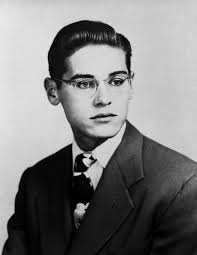
Number 7
BILL EVANS and CHET BAKER
Alone Together
https://www.youtube.com/watch?v=cpxgDnt8BWY
The backing musicians are truly the gold standard of jazz recording artists. All these individuals are legendary jazz icons with very successful solo careers. The ensemble includes Herbie Mann, Pepper Adams, Kenny Burrell, Paul Chambers, Connie Kay and Philly Joe Jones. All these artists turn in stellar performances.
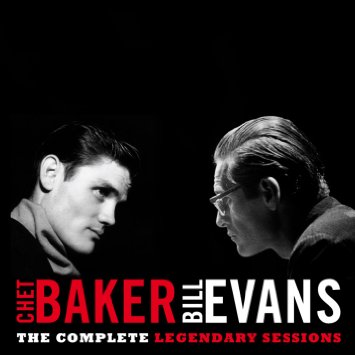
WOODY HERMAN Early Autumn
Early Autumn
https://www.youtube.com/watch?v=1EfhG5CDu7Y
"Early Autumn" (1949) is a song composed by Ralph Burns and Woody Herman with lyrics by Johnny Mercer. It was a hit for Woody Herman in the year it was written.

Number 5
SONNY STITT Salt and Pepper
Salt and Pepper
https://www.youtube.com/watch…
Edward "Sonny" Stitt (born Edward Boatner, Jr.; February 2, 1924 – July 22, 1982) was an American jazz saxophonist of the bebop/hard bop idiom. He was one of the best-documented saxophonists of his generation, recording over 100 albums. He was nicknamed the "Lone Wolf" by jazz critic Dan Morgenstern, in reference to his relentless touring and devotion to jazz.
Number 4
Chet Baker Big Band A Foggy Day
A Foggy Day
https://www.youtube.com/watch…
Chet Baker Big Band is an album by jazz trumpeter Chet Baker which was recorded in 1956 and released on the Pacific Jazz label.

Number 3
The Kansas City Seven LESTER LEAPS IN
with Lester Young
Lester Leaps In
https://www.youtube.com/watch?v=f60JYoHdfVM
Count Basie and the Kansas City 7 is an album by American jazz bandleader and pianist Count Basie featuring small group performances recorded in 1962 for the Impulse! label.
Count Basie – piano, organ
Thad Jones – trumpet
Frank Wess – flute, alto flute
Frank Foster – tenor saxophone, clarinet
Eric Dixon – tenor saxophone, flute, clarinet
Freddie Greene – guitar
Eddie Jones – bass
Sonny Payne – drums
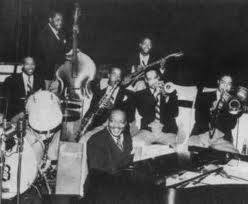
Number 2
Fats Navarro
Goin' to Mintons
https://www.youtube.com/watch?v=ZffM7CGvlfo
There are many tragic figures in bebop history, but Fats Navarro's story is even sadder than most. Considered by some to be a better trumpeter than Dizzy Gillespie (Lennie Tristano is reported to have said of Gillespie, "He's a nice trumpet player, but he's no Fats"), Navarro was killed by his heroin addiction at age 26. This disc includes material from five sessions recorded between September of 1946 and December of 1947, when bop was at the height of its popularity and its most important and influential practitioners were still alive.
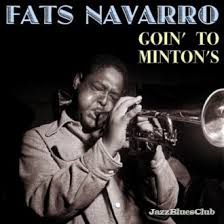
Number 1
My final selection will be Blossom Dearie's IT AMAZES ME.. phrasing as good as it gets.
It Amazes Me
https://www.youtube.com/watch?v=cZ6R8J_DA4M
Blossom Margrete Dearie (April 28, 1924 – February 7, 2009[1]) was an American jazz singer and pianist, often performing in the bebop genre and remembered for her light and girlish voice.[2] One of the last supper club performers, she performed regular engagements in London and New York City over many years.
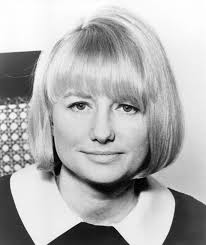
1A
The Savoy Sultans
FRENZY
https://www.youtube.com/watch?v=B35mt3id8cc&index=3&list=PLFV0_oEakAANZGwCe_41JLA1wYvGyYNfc
The original Savoy Sultans were formed by saxophonist Al Cooper, and played at the Savoy Ballroom from 1937 to 1946. This small swing jazz ensemble was comprised, at various times, Jack Chapman, Sam Massenberg, Jesse Drakes and Pat Jenkins on trumpets; Skinny Brown, Rudy Williams, Ed McNeil, Lennie Simmons, Thomas Turrentine Sr. and George Kelly on saxophones; Cyril Haynes, piano; Grachan Moncur II on double bass; Alex "Razz" Mitchell on drums and vocalist Evelyn White.
Opening at the famous Savoy Ballroom on Lenox Avenue, Harlem, on Labor Day 1937, they recorded seven times with Decca Records between 1938 and 1941. According to one reviewer, their recorded legacy leaves much to be desired although contemporary reports by musicians such as Dizzy Gillespie gave the group high praise.
